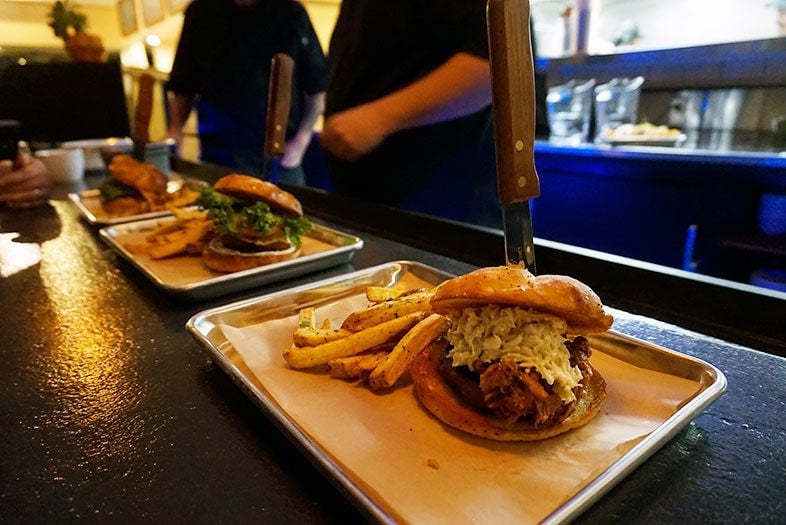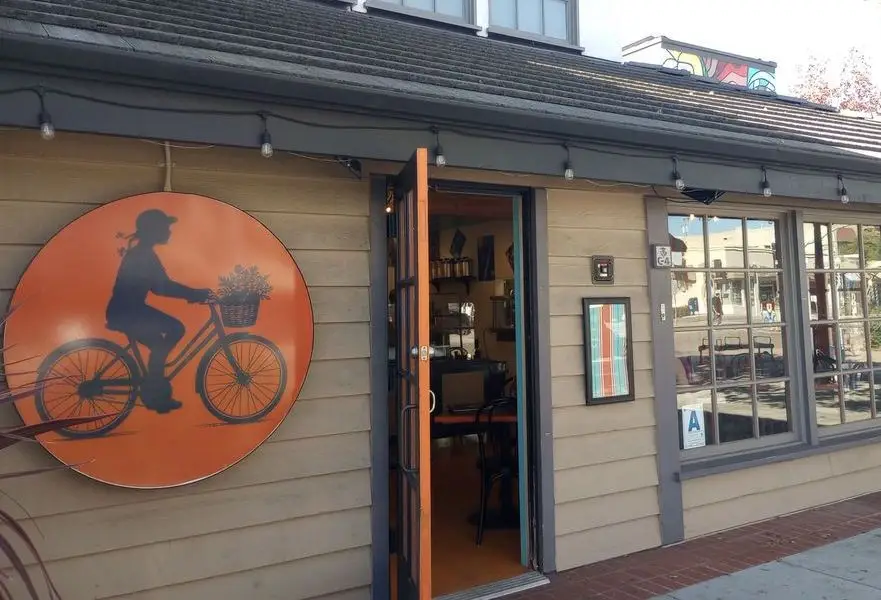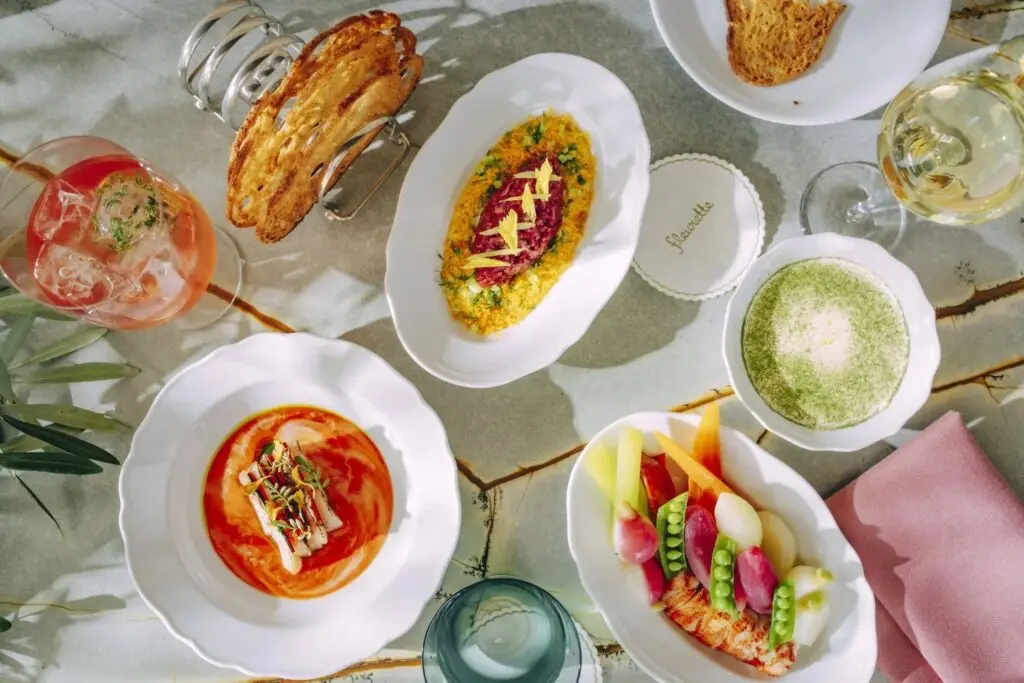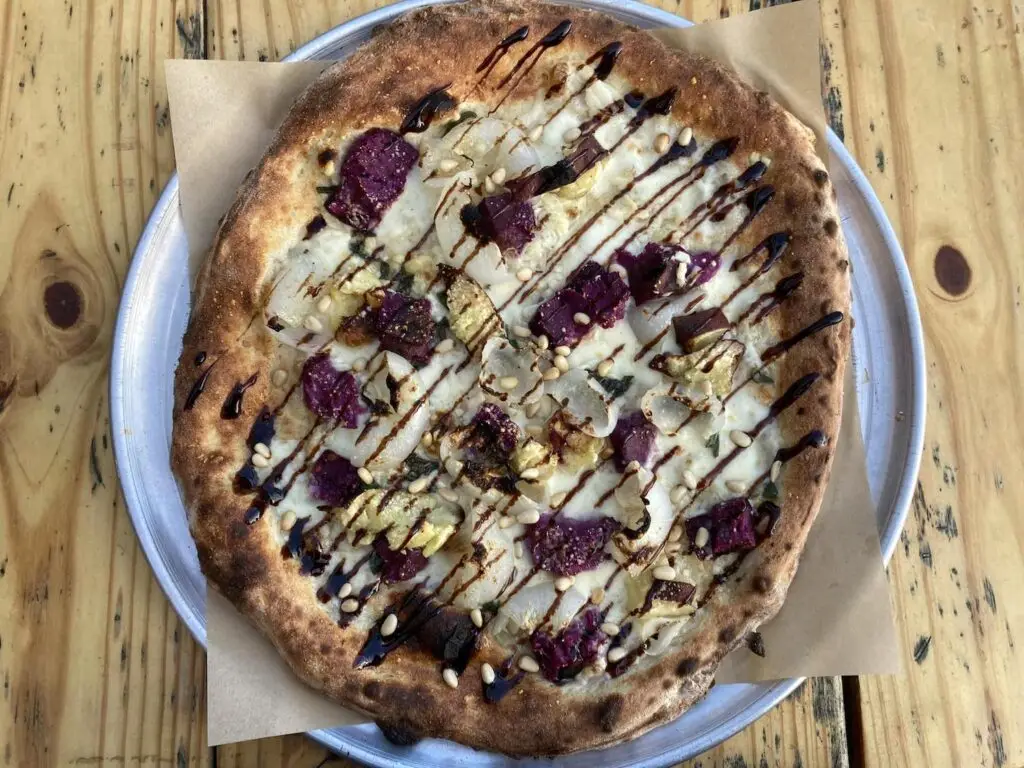1. Servers are going, going, gone
Server jobs helped millions of 20-somethings pay their way through college, helped single parents feed families on flexible schedules, and served as profitable employment for San Diegans without a four-year degree or years of prior work experience. We don’t have long-term studies yet, but after speaking with 30-plus restaurateurs over the last year, I feel confident saying those jobs are disappearing at a rapid, rapid pace. California decided to raise minimum wage for small employers to $15 by 2023, but refused to allow restaurant owners to count tips as wages. So even if a server at a high-end San Diego restaurant makes $30 an hour in tips, the restaurant must currently pay them an additional $11.50 an hour. Almost every restaurateur I’ve spoken with is cutting server jobs or going to pure counter-service (no servers at all). It’s bad news for servers, but maybe not for diners. The fast-casual/no-service model is thriving, suggesting diners may not see full service as necessary for their meal.
2. No one wants to cook
There is a drastic income disparity among restaurant employees. Tipped servers make the most, cooks make next to least (dishwashers have it the worst). Culinary school, while a valuable enrichment for anyone serious about the art of food, has never made so little economic sense. The average culinary school costs anywhere between $20,000 (Le Cordon Bleu) and $100,000 (CIA Hyde Park). The average hourly rate for a cook in San Diego is $12–$16. It’s going to take a long, long time for them to pay that off. Which means cooking is a minimum-wage job at this point, and fewer and fewer people are going into it. Local restaurateurs have told me over and over that they can’t find good cooks.
3. Plant dishes have finally, finally arrived
The world would be a better place if Americans ate less meat. We eat the second most per capita in the world, behind only Australia. Meat consumption is hell on the environment. Raising livestock is responsible for about 18 percent of all greenhouse gas emissions, and science suggests eating processed meat (sausages, bacon, etc.) is pretty bad for our health. There’s a reason for this: we have taste buds. You don’t need to do very much to meat to make it taste good; salt, pepper, and heat often do the trick. Plants, however, take much more coaxing, flavor development, and skill to reach that deeply satisfying level. Up until very recently, plant-based cooking was subpar bordering on inedible, largely because serious chefs refused to do it. That’s changed. Almost every serious restaurant in San Diego is taking pride in their vegetarian dishes, and the shared knowledge and recipe base is increasing by the day. Vegetarian dishes are rivaling meat-based dishes for pure flavor, if not beating them outright.
4. Poke exhaustion
The truth is out about poke. While it may seem a healthy trend, fact is most of the places are buying fish of unknown origin, meaning it’s often caught unsustainably and treated with chemicals to survive the trip overseas. For anyone who cares about the overfishing problem, and whether the proteins they’re eating or not are clean, it’s become an imperative to ask poke restaurants where they source their fish.
5. Virtual restaurants are coming
This is an extension of the rising cost of doing restaurant business. A top chef I know is doing “restaurants” that don’t exist anywhere but in your meal-delivery apps, like Postmates or Uber Eats. The idea is that they can rent a commissary and have different stations cooking different types of cuisine. Each distinct area is given a “restaurant name,” and gets its own listing on the apps. Then the chefs don’t have to pay to build a sit-down restaurant, rent is low in an undesirable area, and they don’t have staff to pay for. The good news is that you have a top-caliber chef designing your Postmates meal. Bad news is, you can never go to this restaurant because it doesn’t physically exist.
6. Food waste was fought
It’s been percolating. In 2014, the US wasted enough food to fill the Empire State Building 91 times. But this year San Diego restaurants took food waste really, really seriously. Chefs used to juice citrus and throw out the rinds. Now they’re using the rinds for marinades and tinctures at the bar. Chefs are composting and using every bit of every fish (marrow, bones, etc.). They’re serving specials of lesser-known cuts of meat, and—thanks to people like Anthony Bourdain, Andrew Zimmern, and the indigenous cultures who inspired them—people are giving them a try. From the collaborative effort of the event “Wasted” to working with the San Diego Food Bank, chefs aren’t just taking the sexy parts of the animal or plant and discarding the rest.
7. Plastic got the boot
alifornia enacted the plastic straw ban, finally (although inexplicably gave an exemption to the biggest plastic straw users, the fast food industry). Plastic has become one of the most pressing environmental concerns on the planet. British prime minister Theresa May called plastics the most pressing environmental crisis the world is facing. Scientists are calling our oceans “plastic soup” because of all the microplastics at every level of the oceanic food chain. If that’s not reason enough to figure out solutions, turns out we’re eating a lot of plastic, too. The only good reason to have plastic straws at this point is for disabled Americans who need them. Restaurants started using compostable, plant-based alternatives, trying out paper straws, pasta straws, etc. We’re getting closer to the day it’ll be shameful to have plastic to-go materials at restaurants.

A Critic’s Take: Seven Restaurant Trends That Defined 2018
PARTNER CONTENT
Plant-based foods, like Anthem’s vegan burgers and fries, are part of what defined the year in San Diego restaurants


















